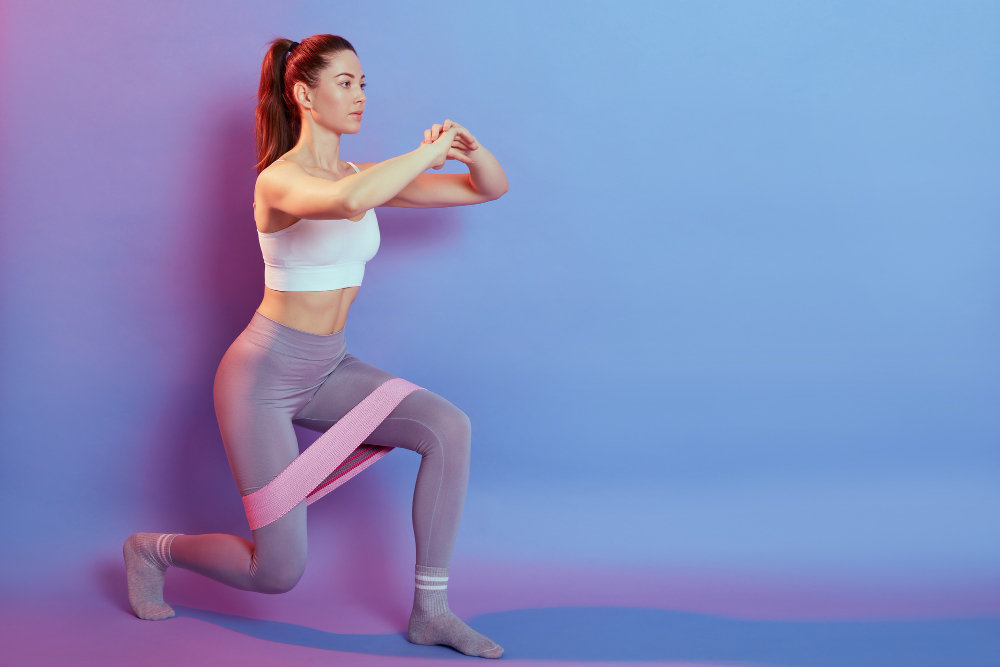If you want to run stronger, faster, and injury-free, you need to pay attention to your hips and knees. These two joints are the foundation of smooth, efficient running, and when they’re weak, they can lead to pain, inefficiency, and even serious injuries.
This is where resistance bands come in. They’re a simple, effective, and affordable way to build strength in the muscles that support your hips and knees. Whether you’re recovering from an injury or looking to prevent one, adding these band exercises to your routine can be a game-changer. In this guide, we’ll cover why runners need to strengthen these areas and the best resistance band moves to keep you strong, stable, and ready to crush your miles.
Why Runners Need Strong Hips and Knees
Ever experienced knee pain after a long run? Or maybe your form starts to break down when fatigue sets in? These are classic signs that your hips and knees might not be pulling their weight.
Here’s why they matter:
- Hip strength controls knee alignment. Weak hips can cause your knees to collapse inward (valgus collapse), leading to pain and potential injuries like IT band syndrome or runner’s knee.
- Stable knees mean better shock absorption. Every time your foot strikes the ground, your knees take on impact forces. Strong muscles around the knee (quads, hamstrings, and calves) help absorb that stress, preventing wear and tear.
- A strong lower body equals better endurance. If your muscles fatigue too quickly, your form will suffer, making you less efficient and more prone to overuse injuries.
Best Resistance Band Exercises for Hips and Knees
Here are seven must-do resistance band exercises to strengthen your lower body and improve your running mechanics:
1. Lateral Band Walks
Activates the glute medius, which plays a key role in hip stability.
How to do it:
- Place a resistance band just above your knees or around your ankles.
- Get into a slight squat position with feet hip-width apart.
- Take small, controlled steps to the side while keeping tension on the band.
Pro tip: Don’t let your knees cave in. Keep them aligned with your toes.
2. Clamshells with a Band
Strengthens the outer glutes, reducing stress on the knees.
How to do it:
- Lie on your side with a band around your thighs, just above the knees.
- Keep your feet together and open your knees apart like a clamshell.
- Slowly return to the starting position.
Pro tip: Keep your core engaged and avoid rolling your hips backward.
3. Banded Squats
Builds strength in the glutes, quads, and hamstrings for overall knee stability.
How to do it:
- Place a band around your thighs, just above your knees.
- Stand with feet shoulder-width apart and squat down, pushing your hips back.
- Drive through your heels to return to standing.
Pro tip: Focus on depth. Aim for at least parallel thighs to the ground.
4. Monster Walks
Strengthens the hip stabilizers and improves running mechanics.
How to do it:
- Place a band around your ankles or above your knees.
- Get into a slight squat position and take big diagonal steps forward and backward.
Pro tip: Stay low to keep constant tension on the band.
5. Glute Bridges with a Band
Activates the glutes, which power your stride and protect your knees.
How to do it:
- Lie on your back with knees bent and a band around your thighs.
- Push through your heels to lift your hips, squeezing your glutes at the top.
- Lower back down with control.
Pro tip: Don’t arch your lower back. Keep the movement in your glutes.
6. Standing Hip Abductions
Builds lateral hip strength to prevent knee collapse.
How to do it:
- Loop a resistance band around your ankles.
- Stand tall and lift one leg straight out to the side without leaning.
- Return to the start and switch sides.
Pro tip: Hold onto a wall for balance if needed, but don’t rely on it too much!
7. Seated Knee Extensions with a Band
Strengthens the quadriceps for better knee support.
How to do it:
- Sit on a chair and anchor a band around both feet.
- Extend one leg straight out, keeping tension on the band.
- Lower back down and repeat.
Pro tip: Control the movement, don’t let the band snap your leg back.
Final Thoughts
Strong hips and knees are non-negotiable if you want to run efficiently and stay injury-free. These joints play a crucial role in stabilizing your stride, absorbing impact, and preventing common running injuries.
Resistance bands offer a simple yet powerful way to strengthen the muscles that support your hips and knees. By incorporating exercises like lateral band walks, clamshells, banded squats, and glute bridges into your routine, you’ll build the stability, strength, and endurance needed to run stronger for longer.







